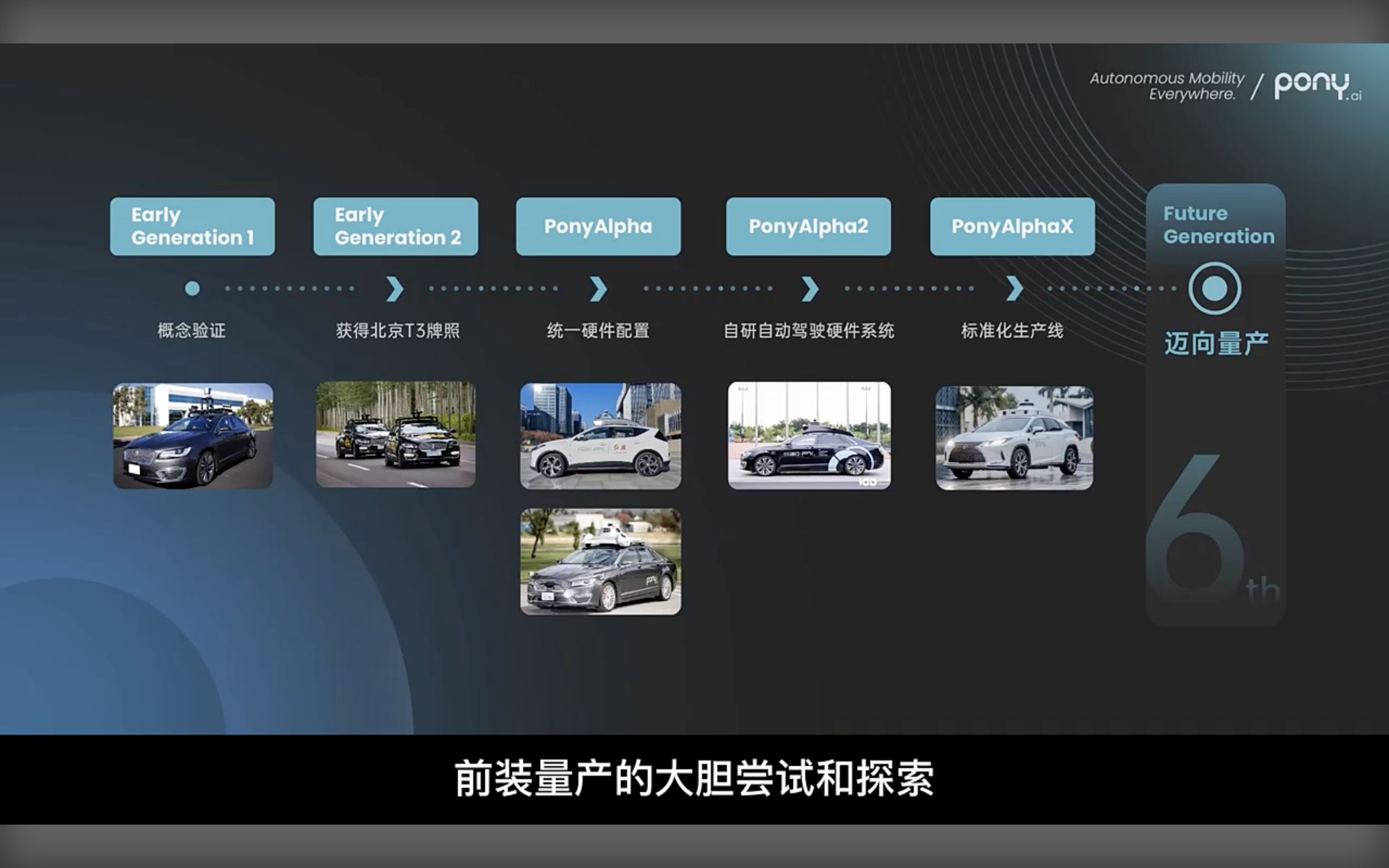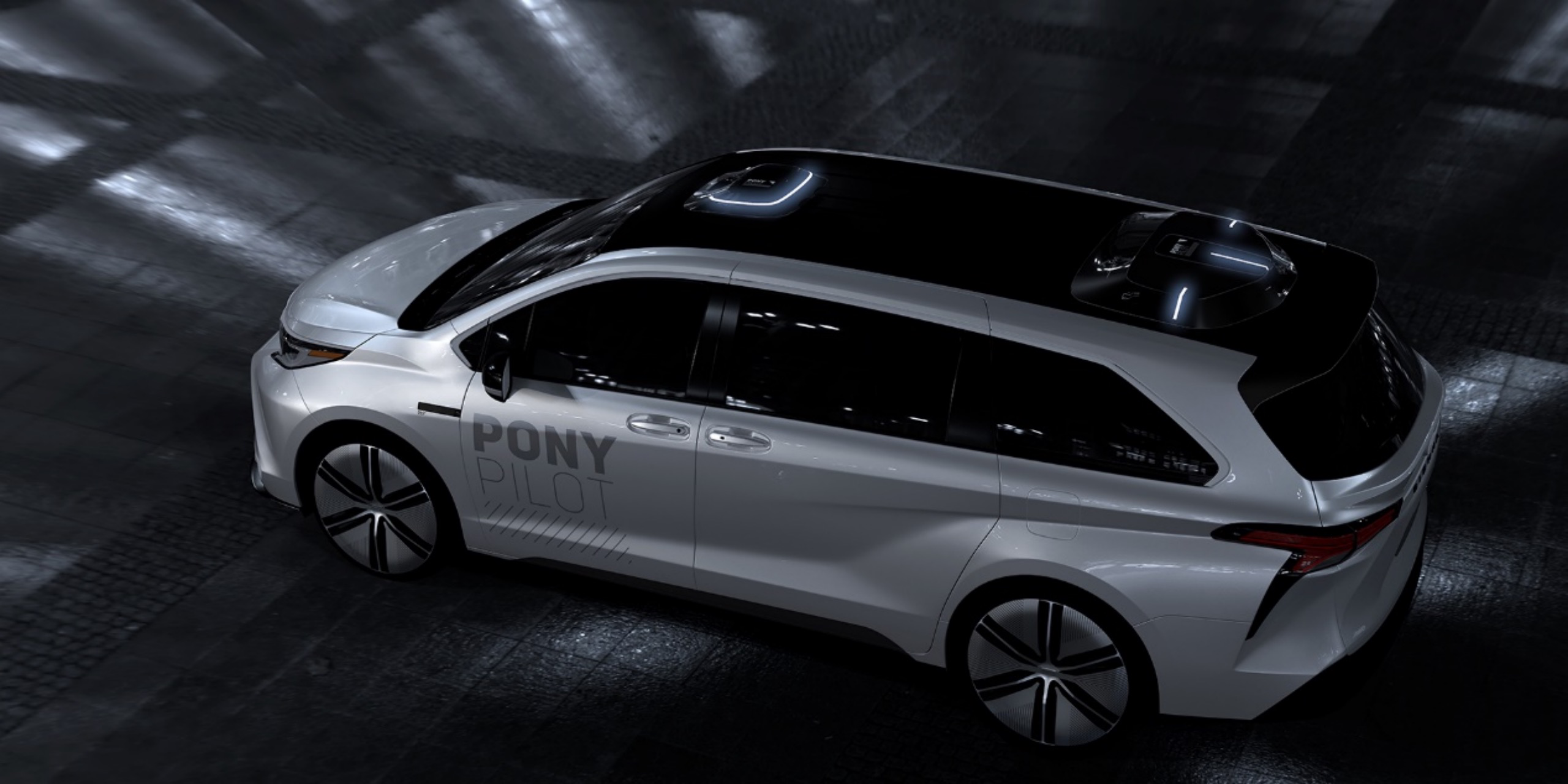On January 20, Xiao Ma Zhixing unveiled the design of the sixth generation autonomous driving software and hardware system, sensors, and computing platform for mass-produced L4 vehicles.
The first batch of vehicles to be equipped with this system will be the Toyota S-AM, based on the 7-seater Sienna design. The model will begin road testing in China this year and will be put into daily Robotaxi operation in the first half of 2023.
The autonomous driving system was designed according to the goal of mass production in terms of styling design, component development and selection, software and hardware coupling, safety redundancy, and system assembly and production.
In terms of appearance, Xiao Ma Zhixing showcased the design of the autonomous driving vehicle equipped with the new system for the first time, aiming to embody a design concept that is closer to mass production, making the perception module more integrated and beautiful.
The new generation of sensor kits adopts a unique front and rear two-segment design, with a solid-state lidar integrated in the front and three solid-state lidars integrated in the rear. Compared with the previous generation of sensors, the volume is greatly reduced, and both functionality and aesthetics are considered.
Compared with the previous generation, the new generation of Xiao Ma Zhixing’s autonomous driving software and hardware system continues to use the technology route of multi-sensor deep fusion (Sensor Fusion), upgrading towards mass production in terms of sensor quantity and selection. The system first adopted solid-state lidars on a large scale, with a total of 23 sensors, including a self-developed signal light recognition camera with an improved resolution of 1.5 times.
The sensor package specifically includes four solid-state lidars located on the top of the vehicle, three supplementary blind-spot lidars distributed on the left, right, and rear, four millimeter-wave corner radars located on the four corners of the roof, a forward long-range millimeter-wave radar, and 11 cameras, seven of which are located on the roof and four around the vehicle.
At the same time, this mass-production-level system solution adopts Xiao Ma Zhixing’s self-developed L4 autonomous driving computing unit, introducing the automotive-grade Nvidia DRIVE Orin system chip, which has higher performance, higher bandwidth, and lower latency, and has realized mass production by cooperating with the industry chain.
Compared with the previous generation of computing units, the computing power of the new generation is expected to increase by at least 30%, the weight is reduced by at least 30%, and the cost is reduced by at least 30%. Combining the experience of the previous generation computing platform, the water cooling and heat dissipation scheme has also been optimized and upgraded.Based on the strategic cooperation with NVIDIA, Pony.ai has launched a variety of computing unit schemes with different chip configurations. The technology requirements for both self-driving passenger cars and self-driving commercial vehicles can be met simultaneously, based on one or more NVIDIA Orin system-level chips and NVIDIA Ampere architecture GPUs that meet automotive regulations.

The new-generation system has multi-level redundancy and can achieve safe roadside parking or safe parking inside the lane in emergency situations, minimizing safety risks.
In December last year, Pony.ai became the first company in China to conduct self-driving truck road tests on highways. Meanwhile, Pony.ai is also the only company that has obtained automatic-driving truck road-test permits in both Beijing and Guangzhou.

In November, Pony.ai was granted a permit for commercial Robotaxi pilots in Beijing. At present, Pony.ai is also one of the first companies to conduct self-driving road tests in all four top-tier cities in China. In the future, Pony.ai will continue to innovate autonomous-driving technology research and development, accelerating the scale production of self-driving technology.
🔗Source: Official Pony.ai
This article is a translation by ChatGPT of a Chinese report from 42HOW. If you have any questions about it, please email bd@42how.com.
